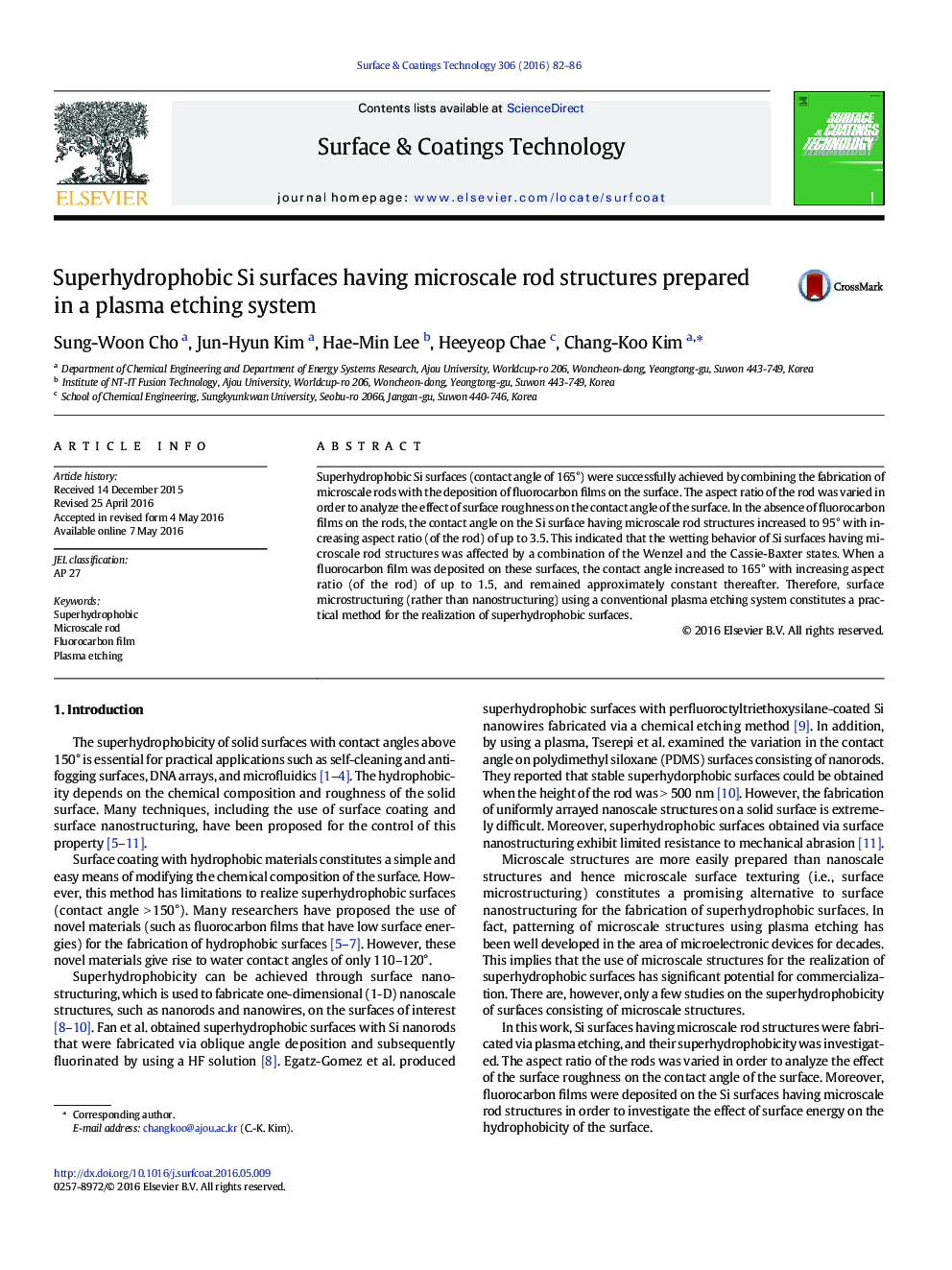| Article ID | Journal | Published Year | Pages | File Type |
|---|---|---|---|---|
| 5465173 | Surface and Coatings Technology | 2016 | 5 Pages |
â¢Superhydrophobic Si surfaces (contact angle of 165°) were achieved via plasma etching.â¢The fabrication of microscale rods and the deposition of fluorocarbon films was combined.â¢It was done in a conventional plasma etching system.â¢Surface microstructuring constitutes a practical method for realizing superhydrophobic Si surfaces.
Superhydrophobic Si surfaces (contact angle of 165°) were successfully achieved by combining the fabrication of microscale rods with the deposition of fluorocarbon films on the surface. The aspect ratio of the rod was varied in order to analyze the effect of surface roughness on the contact angle of the surface. In the absence of fluorocarbon films on the rods, the contact angle on the Si surface having microscale rod structures increased to 95° with increasing aspect ratio (of the rod) of up to 3.5. This indicated that the wetting behavior of Si surfaces having microscale rod structures was affected by a combination of the Wenzel and the Cassie-Baxter states. When a fluorocarbon film was deposited on these surfaces, the contact angle increased to 165° with increasing aspect ratio (of the rod) of up to 1.5, and remained approximately constant thereafter. Therefore, surface microstructuring (rather than nanostructuring) using a conventional plasma etching system constitutes a practical method for the realization of superhydrophobic surfaces.
